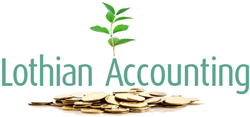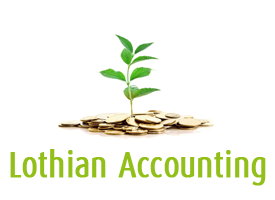The new dividend tax
November 16, 2015

- The Dividend tax credit is being abolished.
- A new £5,000 Dividend allowance is being introduced, in addition to the personal allowance. It will be possible to earn £16,000 tax free if you have both salary and dividend income.
- Small company owners, particularly those with a sole director will be hardest hit.
- Very high earners and modest investors will make small tax savings.
- Tax planning for the 2015-16 tax year (ending 6 April 2016) has become vital for small companies.
The 8 July 2015 budget announcement was that the government will abolish the Dividend Tax Credit from April 2016 and introduce a new Dividend Tax Allowance of £5,000 a year.
So what is the Dividend Tax Credit and surely a Dividend Tax Allowance is good, isn’t it?
Well yes and no. Ironically though, it is those with an income including dividends just above the £100,000 limit who save a small amount of tax. Smaller investors who only pay basic rate of tax will also save.
So who loses out? The small company owners, particularly those with only one director as well as contractors.
The Dividend tax credit is a bit of an anomaly. Basically a dividend is received net of tax; so if a company paid out £100 dividend, this was net of a 10% tax credit. Companies do not get tax relief on dividends so the Government is happy that the tax has been paid by the company.
Whoever receives the dividend shows the gross dividend (£100/0.9 = £111) in their income tax return and then at the bottom of the return, they take off the £11 tax credit. A lot of complexity with the end result that a recipient of a dividend does not pay any tax on that dividend income if they are a basic rate taxpayer. If they pay tax at the higher rate, they pay an extra 22.5% tax on the dividend income that falls into the higher rate band.
The new dividend allowance from 6 April 2016 will be £5,000. Anyone who has dividend income less than £5,000 will pay no tax on this. This allowance will be an additional allowance on top of the personal allowance (£11,000 from 6 April 2016). So if next year you earn £11,000 salary and £5,000 dividend income, you will have no tax to pay.
New Dividend tax rates
The new rates of tax on dividend income above the dividend allowance will be:
- 7.5% for basic rate taxpayers.
- 32.5% for higher rate taxpayers.
- 38.1% for additional rate (earning over £150,000) taxpayers.
Example small company
Below is an example small company situation showing how the tax will increase as a result of the new rules.
Let’s assume a sole director company has profits of £80,000 and the director wishes to pay himself £58,000 out of his company in the most tax efficient manner.
For 2016/17, the personal allowance will be £11,000, the basic rate threshold is £32,000 and the higher rate threshold is £43,000. The dividend allowance is £5,000. The primary and secondary earnings limit over which National Insurance (NI) is paid is assumed to be £8,060 in line with 2015-16.
New rules applying to 2016/17 tax year:
|
Tax Paid |
|
Notes |
| Company profit before salary and tax |
80,000 |
|
|
| Salary |
(8,000) |
|
No Employment Allowance for Employer NI available for sole directors from 16/17 |
| Company profit after salary |
72,000 |
14,400 |
Corporation tax @ 20% |
| Dividend of £50,000 taxed as: |
|
|
|
| £3,000 (nil as personal allowance covers this) |
|
|
|
| £5,000 @ 0% (dividend allowance) |
|
|
|
| £27,000 @ 7.5% |
|
2,025 |
|
| £15,000 @ 32.5% |
|
4,875 |
|
| Total tax payable |
|
£21,300 |
|
Old rules applying to 2016/17 tax year
|
Tax paid |
|
|
| Company profit before salary and tax |
80,000 |
|
|
| Salary |
(11,000) |
353 |
Employee NI (salary covered by Employment allowance for Employer NI) |
| Company profit after salary |
69,000 |
13,800 |
Corporation tax @ 20% |
| Dividend of £47,000 grossed up to £52,222 taxed as: |
|
|
£3,000 additional salary so £3,000 less dividend paid |
| £32,000 @ 10% |
|
3,200 |
|
| £20,222 @ 32.5% |
|
6,572 |
|
| Less dividend tax credit |
|
(5,222) |
|
| Total tax payable |
|
£18,703 |
|
The increase in tax under the new rules is therefore circa £2,600
Tax planning for small companies
The changes to dividend taxation mean that small company owners, particularly those with a sole director, may wish to consider whether it is beneficial for them to pay higher dividends in the 2015-16 tax year rather than in future tax years. This assumes of course that there are sufficient profits to pay out dividends.
This is particularly important if the directors require a large cash extraction from the company for personal reasons. This will result in a higher income tax liability to pay by 31 January 2017 but this will be offset by a dividend tax saving since lower dividends will be required at the new higher rate of 32.5% in future tax years. This new higher rate of 32.5% has increased by 44% against the effective higher rate in 2015-16 (32.5% less 10% tax credit i.e. 22.5%).
Corporation tax rates will reduce to 19% in 2017 and 18% in 2020. This will be a welcome relief to small company owners and therefore the short-term hike in dividend tax will eventually be offset by a lower corporation tax bill in future years.
If you would like to talk more about how the changes to dividend tax might affect your company, please call or drop me an email.






